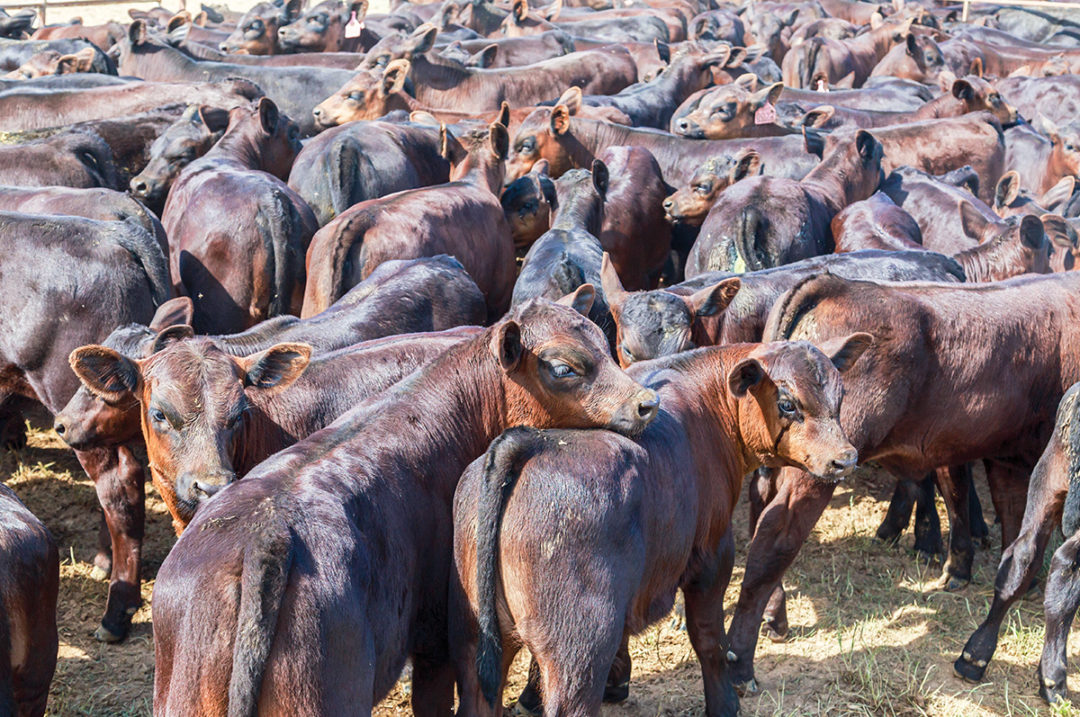As we approach the season for weaning calves and introducing new cattle to feedlots, it's crucial to address the issue of stress, which can greatly affect their performance. The actions taken during this period can have a significant impact on the calves’ well-being and performance. A proper nutritional program and a smooth transition to their new surroundings are crucial in maintaining their health and performance, which can ultimately impact profitability.
Weaning is a stressful period for calves
Weaning is a significant event in a calf’s life that can result in serious stress. It marks the point where the calf is separated from its mother and must learn to rely on its own resources to survive. Calves have a strong bond with their moms and rely on them for nourishment and protection. When they are suddenly removed from this familiar environment, it can be a traumatic experience that leaves them feeling timid and anxious. The process of weaning involves a lot of changes that can cause stress and lead to poor health outcomes if not managed properly.
In addition to separation from their mother and familiar environment, calves are also often exposed to a range of new stressors during weaning. This can include transportation, vaccinations, commingling with other calves and being moved to a new environment. These changes can be overwhelming for the calf and can lead to stress-related health issues, such as weight loss, reduced immunity and increased susceptibility to disease. Another source of stress during weaning is the change in diet that calves experience. Before weaning, they rely on their mother’s milk and pasture for nourishment. After weaning, calves must adjust to a new diet, which can consist of new feedstuffs to the calf. This change can be difficult for some calves, which can lead to reduced appetite, digestive issues and weight loss.
It’s essential to manage the stress associated with weaning to ensure that calves remain healthy and grow well.
Keeping calves on a high-performance growth path
One of the critical factors for ensuring the growth and development of calves is water intake. Calves need to consume a significant amount of water to maintain their health and growth. It’s essential to provide them with clean, fresh water and to ensure there’s enough water for all calves. As water is vital to a calf’s health, it’s important to ensure that the refill rate is adequate for the number of calves in the pen, especially for those who are more hesitant to drink from new and possibly unfamiliar water sources.
Bunk space is another essential factor that contributes to a calf’s growth and development. Calves need adequate space to consume feed and water. The recommended bunk space is 8 to 12 inches per calf for ad libitum (without restriction) feeding. Additionally, providing calves with long-stemmed forage can help increase saliva intake, which can help to buffer the rumen – allowing the rumen microbes to function more efficiently. A good vitamin and mineral program is also crucial for the growth and development of calves. When calves have adequate access to feed and water, intake is more likely to increase.
New arrivals may eat poorly for the first few days until they become accustomed to their new surroundings, pen mates and ration. Abrupt changes in feed can disrupt rumen function, which can lead to digestive problems. To overcome this issue, it’s crucial to work with a nutritionist to ensure a nutrient-dense diet that contains adequate energy, protein, vitamins and minerals to overcome their low intake.
The right program for a smooth transition
During the first two to three weeks, calves make a transition to a new plane of nutrition. Reading bunks, monitoring ration dry matter changes and delivering feed at the same time every day are three key management components to focus on. Let the calves tell you when they’re ready to take that next step. It’s also important to include a postbiotic feed additive in the ration to help restore the microbial population and promote rumen health. Not only can this help with consistent feed intake, but it can also improve rumen function and the overall health and well-being of the calves.
Lick tubs for weaning and receiving can also be used in the pen to help the calves who are not coming up to the bunk as quickly or are hanging back. Lick tubs are used to help boost vitamin, mineral and protein supplementation, as well as stabilize the rumen to help them get up on feed. To get rumen function moving in the right direction, also consider drenching calves at processing with a product designed to support rumen health. This can help jumpstart the rumen microbiota and optimize the rumen environment. An oral drench is easy to use, inexpensive and takes only seconds to administer. Plus, it can pay off handsomely in terms of helping to get cattle to eat and restoring optimal rumen function, especially in calves that are timid at the bunk.
In conclusion, weaning can be a stressful time for calves, but having a plan in place prior to weaning can make the program successful. It is essential to work with a nutritionist and a vet to ensure a nutrient-dense diet and vaccination protocols to maintain the calves’ health and promote weight gain after weaning. Providing adequate water, bunk space and a postbiotic feed additive – as well as using lick tubs – are all essential factors in helping calves make a smooth transition, leading to a healthy, productive life.








